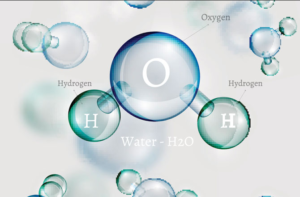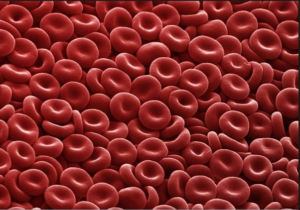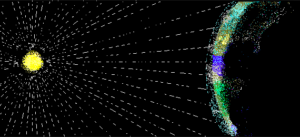Scientific Notation
7.2 Learning Objectives
- Write scientific notation
- Define decimal and scientific notation
- Convert between scientific and decimal notation
- Multiply and divide numbers expressed in scientific notation
- Problem Solving With Scientific Notation
7.2.1 Convert between scientific and decimal notation
Before we can convert between scientific and decimal notation, we need to know the difference between the two. Scientific notation is used by scientists, mathematicians, and engineers when they are working with very large or very small numbers. Using exponential notation, large and small numbers can be written in a way that is easier to read. When a number is written in scientific notation, the exponent tells you if the term is a large or a small number. A positive exponent indicates a large number and a negative exponent indicates a small number that is between 0 and 1. It is difficult to understand just how big a billion or a trillion is. Here is a way to help you think about it.| Word | How many thousands | Number | Scientific Notation |
| million | 1000 x 1000 = a thousand thousands | 1,000,000 | [latex]10^6[/latex] |
| billion | (1000 x 1000) x 1000 = a thousand millions | 1,000,000,000 | [latex]10^9[/latex] |
| trillion | (1000 x 1000 x 1000) x 1000 = a thousand billions | 1,000,000,000,000 | [latex]10^{12}[/latex] |
Scientific Notation
A positive number is written in scientific notation if it is written as [latex]a\times10^{n}[/latex] where the coefficient a is [latex]1\leq{a}<10[/latex], and n is an integer.| Number | Scientific Notation? | Explanation |
| [latex]1.85\times10^{-2}[/latex] | yes | [latex]1\leq1.85<10[/latex] [latex]-2[/latex] is an integer |
| [latex] \displaystyle 1.083\times {{10}^{\frac{1}{2}}}[/latex] | no | [latex] \displaystyle \frac{1}{2}[/latex] is not an integer |
| [latex]0.82\times10^{14}[/latex] | no | 0.82 is not [latex]\geq1[/latex] |
| [latex]10\times10^{3}[/latex] | no | 10 is not < 10 |
|
Large Numbers |
Small Numbers |
|||
| Decimal Notation | Scientific Notation | Decimal Notation | Scientific Notation | |
| [latex]500.0[/latex] | [latex]5\times10^{2}[/latex] | [latex]0.05[/latex] | [latex]5\times10^{-2}[/latex] | |
| [latex]80,000.0[/latex] | [latex]8\times10^{4}[/latex] | [latex]0.0008[/latex] | [latex]8\times10^{-4}[/latex] | |
| [latex]43,000,000.0[/latex] | [latex]4.3\times10^{7}[/latex] | [latex]0.00000043[/latex] | [latex]4.3\times10^{-7}[/latex] | |
| [latex]62,500,000,000.0[/latex] | [latex]6.25\times10^{10}[/latex] | [latex]0.000000000625[/latex] | [latex]6.25\times10^{-10}[/latex] | |
Convert from decimal notation to scientific notation
To write a large number in scientific notation, move the decimal point to the left to obtain a number between 1 and 10. Since moving the decimal point changes the value, you have to multiply the decimal by a power of 10 so that the expression has the same value. Let’s look at an example.[latex]\begin{array}{r}180,000.=18,000.0\times10^{1}\\1,800.00\times10^{2}\\180.000\times10^{3}\\18.0000\times10^{4}\\1.80000\times10^{5}\\180,000=1.8\times10^{5}\end{array}[/latex]
Notice that the decimal point was moved 5 places to the left, and the exponent is 5.Example 7.2.A
Write the following numbers in scientific notation.- [latex]920,000,000[/latex]
- [latex]10,200,000[/latex]
- [latex]100,000,000,000[/latex]
Answer:
- [latex]\underset{\longleftarrow}{920,000,000}[/latex] We will move the decimal point to the left, it helps to place it at the end of the number and then count how many times you move it to get one number before it that is between 1 and 10. [latex]\underset{\longleftarrow}{920,000,000}=920,000,000.0[/latex], move the decimal point 8 times to the left and you will have [latex]9.20,000,000[/latex], now we can replace the zeros with an exponent of 8, [latex]9.2\times10^{8}[/latex]
- [latex]\underset{\longleftarrow}{10,200,000}=10,200,000.0=1.02\times10^{7}[/latex], note here how we included the 0 and the 2 after the decimal point. In some disciplines, you may learn about when to include both of these. Follow instructions from your teacher on rounding rules.
- [latex]\underset{\longleftarrow}{100,000,000,000}=100,000,000,000.0=1.0\times10^{11}[/latex]
[latex]\begin{array}{r}\underset{\longrightarrow}{0.00004}=00.0004\times10^{-1}\\000.004\times10^{-2}\\0000.04\times10^{-3}\\00000.4\times10^{-4}\\000004.\times10^{-5}\\0.00004=4\times10^{-5}\end{array}[/latex]
You may notice that the decimal point was moved five places to the right until you got to the number 4, which is between 1 and 10. The exponent is [latex]−5[/latex].Example 7.2.B
Write the following numbers in scientific notation.- [latex]0.0000000000035[/latex]
- [latex]0.0000000102[/latex]
- [latex]0.00000000000000793[/latex]
Answer:
- [latex]\underset{\longrightarrow}{0.0000000000035}=3.5\times10^{-12}[/latex], we moved the decimal 12 times to get to a number between 1 and 10
- [latex]\underset{\longrightarrow}{0.0000000102}=1.02\times10^{-8}[/latex]
- [latex]\underset{\longrightarrow}{0.00000000000000793}=7.93\times10^{-15}[/latex]
Convert from scientific notation to decimal notation
You can also write scientific notation as decimal notation. Recall the number of miles that light travels in a year is [latex]5.88\times10^{12}[/latex], and a hydrogen atom has a diameter of [latex]5\times10^{-8}[/latex] mm. To write each of these numbers in decimal notation, you move the decimal point the same number of places as the exponent. If the exponent is positive, move the decimal point to the right. If the exponent is negative, move the decimal point to the left.[latex]\begin{array}{l}5.88\times10^{12}=\underset{\longrightarrow}{5.880000000000.}=5,880,000,000,000\\5\times10^{-8}=\underset{\longleftarrow}{0.00000005.}=0.00000005\end{array}[/latex]
For each power of 10, you move the decimal point one place. Be careful here and don’t get carried away with the zeros—the number of zeros after the decimal point will always be 1 less than the exponent because it takes one power of 10 to shift that first number to the left of the decimal.Example 7.2.c
Write the following in decimal notation.- [latex]4.8\times10^{-4}[/latex]
- [latex]3.08\times10^{6}[/latex]
Answer:
- [latex]4.8\times10^{-4}[/latex], the exponent is negative, so we need to move the decimal to the left. [latex]\underset{\longleftarrow}{4.8\times10^{-4}}=\underset{\longleftarrow}{.00048}[/latex]
- [latex]3.08\times10^{6}[/latex], the exponent is positive, so we need to move the decimal to the right. [latex]\underset{\longrightarrow}{3.08\times10^{6}}=\underset{\longrightarrow}{3080000}[/latex]
Think About It
To help you get a sense of the relationship between the sign of the exponent and the relative size of a number written in scientific notation, answer the following questions. You can use the textbox to write your ideas before you reveal the solution. 1. You are writing a number whose absolute value is greater than 1 in scientific notation. Will your exponent be positive or negative? [practice-area rows="1"][/practice-area] 2.You are writing a number whose absolute value is between 0 and 1 in scientific notation. Will your exponent be positive or negative? [practice-area rows="1"][/practice-area] 3. What power do you need to put on 10 to get a result of 1? [practice-area rows="1"][/practice-area]Answer: 1.You are writing a number whose absolute value is greater than 1 in scientific notation. Will your exponent be positive or negative? For numbers greater than 1, the exponent on 10 will be positive when you are using scientific notation. Refer to the table presented above:
| Word | How many thousands | Number | Scientific Notation |
| million | 1000 x 1000 = a thousand thousands | 1,000,000 | [latex]10^6[/latex] |
| billion | (1000 x 1000) x 1000 = a thousand millions | 1,000,000,000 | [latex]10^9[/latex] |
| trillion | (1000 x 1000 x 1000) x 1000 = a thousand billions | 1,000,000,000,000 | [latex]10^{12}[/latex] |
[latex]\begin{array}{c}\frac{t^{8}}{t^{8}}=\frac{\cancel{t^{8}}}{\cancel{t^{8}}}=1\\\frac{{t}^{8}}{{t}^{8}}={t}^{8 - 8}={t}^{0}\\\text{ therefore }\\{t}^{0}=1\end{array}\\[/latex]
We now have described the notation necessary to write all possible numbers on the number line in scientific notation.
Summary
Large and small numbers can be written in scientific notation to make them easier to understand. In the next section, you will see that performing mathematical operations such as multiplication and division on large and small numbers is made easier by scientific notation and the rules of exponents.7.2.2 Multiply and Divide Numbers in Scientific Notation
Numbers that are written in scientific notation can be multiplied and divided rather simply by taking advantage of the properties of numbers and the rules of exponents that you may recall. To multiply numbers in scientific notation, first multiply the numbers that aren’t powers of 10 (the a in [latex]a\times10^{n}[/latex]). Then multiply the powers of ten by adding the exponents. This will produce a new number times a different power of 10. All you have to do is check to make sure this new value is in scientific notation. If it isn’t, you convert it. Let’s look at some examples.Example 7.2.D
[latex]\left(3\times10^{8}\right)\left(6.8\times10^{-13}\right)[/latex]
Answer: Regroup using the commutative and associative properties.
[latex]\left(3\times6.8\right)\left(10^{8}\times10^{-13}\right)[/latex]
Multiply the coefficients.[latex]\left(20.4\right)\left(10^{8}\times10^{-13}\right)[/latex]
Multiply the powers of 10 using the Product Rule. Add the exponents.[latex]20.4\times10^{-5}[/latex]
Convert 20.4 into scientific notation by moving the decimal point one place to the left and multiplying by [latex]10^{1}[/latex].[latex]\left(2.04\times10^{1}\right)\times10^{-5}[/latex]
Group the powers of 10 using the associative property of multiplication.[latex]2.04\times\left(10^{1}\times10^{-5}\right)[/latex]
Multiply using the Product Rule—add the exponents.[latex]2.04\times10^{1+\left(-5\right)}[/latex]
Answer
[latex-display]\left(3\times10^{8}\right)\left(6.8\times10^{-13}\right)=2.04\times10^{-4}[/latex-display]Example 7.2.E
[latex]\left(8.2\times10^{6}\right)\left(1.5\times10^{-3}\right)\left(1.9\times10^{-7}\right)[/latex]
Answer: Regroup using the commutative and associative properties.
[latex]\left(8.2\times1.5\times1.9\right)\left(10^{6}\times10^{-3}\times10^{-7}\right)[/latex]
Multiply the numbers.[latex]\left(23.37\right)\left(10^{6}\times10^{-3}\times10^{-7}\right)[/latex]
Multiply the powers of 10 using the Product Rule—add the exponents.[latex]23.37\times10^{-4}[/latex]
Convert 23.37 into scientific notation by moving the decimal point one place to the left and multiplying by [latex]10^{1}[/latex].[latex]\left(2.337\times10^{1}\right)\times10^{-4}[/latex]
Group the powers of 10 using the associative property of multiplication.[latex]2.337\times\left(10^{1}\times10^{-4}\right)[/latex]
Multiply using the Product Rule and add the exponents.[latex]2.337\times10^{1+\left(-4\right)}[/latex]
Answer
[latex-display]\left(8.2\times10^{6}\right)\left(1.5\times10^{-3}\right)\left(1.9\times10^{-7}\right)=2.337\times10^{-3}[/latex-display]Example 7.2.F
[latex] \displaystyle \frac{2.829\times 1{{0}^{-9}}}{3.45\times 1{{0}^{-3}}}[/latex]
Answer: Regroup using the associative property.
[latex] \displaystyle \left( \frac{2.829}{3.45} \right)\left( \frac{{{10}^{-9}}}{{{10}^{-3}}} \right)[/latex]
Divide the coefficients.[latex] \displaystyle \left(0.82\right)\left( \frac{{{10}^{-9}}}{{{10}^{-3}}} \right)[/latex]
Divide the powers of 10 using the Quotient Rule. Subtract the exponents.[latex]\begin{array}{l}0.82\times10^{-9-\left(-3\right)}\\0.82\times10^{-6}\end{array}[/latex]
Convert 0.82 into scientific notation by moving the decimal point one place to the right and multiplying by [latex]10^{-1}[/latex].[latex]\left(8.2\times10^{-1}\right)\times10^{-6}[/latex]
Group the powers of 10 together using the associative property.[latex]8.2\times\left(10^{-1}\times10^{-6}\right)[/latex]
Multiply the powers of 10 using the Product Rule—add the exponents.[latex]8.2\times10^{-1+\left(-6\right)}[/latex]
Answer
[latex-display] \displaystyle \frac{2.829\times {{10}^{-9}}}{3.45\times {{10}^{-3}}}=8.2\times {{10}^{-7}}[/latex-display]Example (Advanced) 7.2.G
[latex] \displaystyle \frac{\left(1.37\times10^{4}\right)\left(9.85\times10^{6}\right)}{5.0\times10^{12}}[/latex]
Answer: Regroup the terms in the numerator according to the associative and commutative properties.
[latex] \displaystyle \frac{\left( 1.37\times 9.85 \right)\left( {{10}^{6}}\times {{10}^{4}} \right)}{5.0\times {{10}^{12}}}[/latex]
Multiply.[latex] \displaystyle \frac{13.4945\times {{10}^{10}}}{5.0\times {{10}^{12}}}[/latex]
Regroup using the associative property.[latex] \displaystyle \left( \frac{13.4945}{5.0} \right)\left( \frac{{{10}^{10}}}{{{10}^{12}}} \right)[/latex]
Divide the numbers.[latex] \displaystyle \left(2.6989\right)\left(\frac{10^{10}}{10^{12}}\right)[/latex]
Divide the powers of 10 using the Quotient Rule—subtract the exponents.[latex] \displaystyle \begin{array}{c}\left(2.6989 \right)\left( {{10}^{10-12}} \right)\\2.6989\times {{10}^{-2}}\end{array}[/latex]
Answer
[latex-display] \displaystyle \frac{\left( 1.37\times {{10}^{4}} \right)\left( 9.85\times {{10}^{6}} \right)}{5.0\times {{10}^{12}}}=2.6989\times {{10}^{-2}}[/latex-display]7.2.3 Problem Solving With Scientific Notation
 Water Molecule
Water MoleculeThink About It
Match each length in the table with the appropriate number of meters described in scientific notation below. Write your ideas in the textboxes provided before you look at the solution.| The height of a desk | Diameter of water molecule | Diameter of Sun at its equator |
| Distance from Earth to Neptune | Diameter of Earth at the Equator | Height of Mt. Everest (rounded) |
| Diameter of average human cell | Diameter of a large grain of sand | Distance a bullet travels in one second |
| Power of 10, units in meters | Length from table above |
| [latex]10^{12}[/latex] | [practice-area rows="1"][/practice-area] |
| [latex]10^{9}[/latex] | [practice-area rows="1"][/practice-area] |
| [latex]10^{6}[/latex] | [practice-area rows="1"][/practice-area] |
| [latex]10^{4}[/latex] | [practice-area rows="1"][/practice-area] |
| [latex]10^{2}[/latex] | [practice-area rows="1"][/practice-area] |
| [latex]10^{0}[/latex] | [practice-area rows="1"][/practice-area] |
| [latex]10^{-3}[/latex] | [practice-area rows="1"][/practice-area] |
| [latex]10^{-5}[/latex] | [practice-area rows="1"][/practice-area] |
| [latex]10^{-10}[/latex] | [practice-area rows="1"][/practice-area] |
Answer:
| Power of 10, units in meters | Length from table above |
| [latex]10^{12}[/latex] | Distance from Earth to Neptune |
| [latex]10^{9}[/latex] | Diameter of Sun at it's Equator |
| [latex]10^{6}[/latex] | Diameter of Earth at the Equator |
| [latex]10^{4}[/latex] | Height of Mt. Everest (rounded) |
| [latex]10^{2}[/latex] | Distance a bullet travels in one second |
| [latex]10^{0}[/latex] | The height of a desk |
| [latex]10^{-3}[/latex] | Diameter of a large grain of sand |
| [latex]10^{-5}[/latex] | Diameter of average human cell |
| [latex]10^{-10}[/latex] | Diameter of water molecule |
 Red Blood Cells
Red Blood CellsExample 7.2.H
Human cells come in a wide variety of shapes and sizes. The mass of an average human cell is about [latex]2\times10^{-11}[/latex] grams[footnote]Orders of magnitude (mass). (n.d.). Retrieved May 26, 2016, from https://en.wikipedia.org/wiki/Orders_of_magnitude_(mass)[/footnote]Red blood cells are one of the smallest types of cells[footnote]How Big is a Human Cell?[/footnote], clocking in at a volume of approximately [latex]10^{-6}\text{ meters }^3[/latex].[footnote]How big is a human cell? - Weizmann Institute of Science. (n.d.). Retrieved May 26, 2016, from http://www.weizmann.ac.il/plants/Milo/images/humanCellSize120116Clean.pdf[/footnote] Biologists have recently discovered how to use the density of some types of cells to indicate the presence of disorders such as sickle cell anemia or leukemia. [footnote]Grover, W. H., Bryan, A. K., Diez-Silva, M., Suresh, S., Higgins, J. M., & Manalis, S. R. (2011). Measuring single-cell density. Proceedings of the National Academy of Sciences, 108(27), 10992-10996. doi:10.1073/pnas.1104651108[/footnote] Density is calculated as the ratio of [latex]\frac{\text{ mass }}{\text{ volume }}\\[/latex]. Calculate the density of an average human cell.Answer: Read and Understand: We are given an average cellular mass and volume as well as the formula for density. We are looking for the density of an average human cell. Define and Translate: [latex]m=\text{mass}=2\times10^{-11}[/latex], [latex]v=\text{volume}=10^{-6}\text{ meters}^3\\[/latex], [latex]\text{density}=\frac{\text{ mass }}{\text{ volume }}\\[/latex] Write and Solve: Use the quotient rule to simplify the ratio.
[latex]\begin{array}{c}\text{ density }=\frac{2\times10^{-11}\text{ grams }}{10^{-6}\text{ meters }^3}\\\text{ }\\\,\,\,\,\,\,\,\,\,\,\,\,\,\,\,\,\,\,\,\,\,\,\,\,\,\,\,\,\,\,\,\,\,\,\,\,\,=2\times10^{-11-\left(-6\right)}\frac{\text{ grams }}{\text{ meters }^3}\\\text{ }\\\,\,\,\,\,\,\,\,\,\,\,\,\,\,\,\,\,\,\,\,\,\,\,=2\times10^{-5}\frac{\text{ grams }}{\text{ meters }^3}\\\end{array}[/latex]
If scientists know the density of healthy cells, they can compare the density of a sick person's cells to that to rule out or test for disorders or diseases that may affect cellular density.Answer
The average density of a human cell is [latex]2\times10^{-5}\frac{\text{ grams }}{\text{ meters }^3}[/latex]
 Light traveling from the sun to the earth.
Light traveling from the sun to the earth.Example 7.2.I
The speed of light is [latex]3\times10^{8}\frac{\text{ meters }}{\text{ second }}\\[/latex]. If the sun is [latex]1.5\times10^{11}[/latex] meters from earth, how many seconds does it take for sunlight to reach the earth? Write your answer in scientific notation.Answer: Read and Understand: We are looking for how long—an amount of time. We are given a rate which has units of meters per second and a distance in meters. This is a [latex]d=r\cdot{t}[/latex] problem. Define and Translate:
[latex]\begin{array}{l}d=1.5\times10^{11}\\r=3\times10^{8}\frac{\text{ meters }}{\text{ second }}\\t=\text{ ? }\end{array}\\[/latex]
Write and Solve: Substitute the values we are given into the [latex]d=r\cdot{t}[/latex] equation. We will work without units to make it easier. Often, scientists will work with units to make sure they have made correct calculations.
[latex]\begin{array}{c}d=r\cdot{t}\\1.5\times10^{11}=3\times10^{8}\cdot{t}\end{array}[/latex]
Divide both sides of the equation by [latex]3\times10^{8}[/latex] to isolate t.
[latex]\begin{array}{c}1.5\times10^{11}=3\times10^{8}\cdot{t}\\\text{ }\\\frac{1.5\times10^{11}}{3\times10^{8}}=\frac{3\times10^{8}}{3\times10^{8}}\cdot{t}\end{array}[/latex]
On the left side, you will need to use the quotient rule of exponents to simplify, and on the right, you are left with t.
[latex]\begin{array}{c}\frac{1.5\times10^{11}}{3\times10^{8}}=\frac{3\times10^{8}}{3\times10^{8}}\cdot{t}\\\text{ }\\\left(\frac{1.5}{3}\right)\times\left(\frac{10^{11}}{10^{8}}\right)=t\\\text{ }\\\left(0.5\right)\times\left(10^{11-8}\right)=t\\0.5\times10^3=t\end{array}[/latex]
This answer is not in scientific notation, so we will move the decimal to the right, which means we need to subtract one factor of 10.
[latex]0.5\times10^3=5.0\times10^2=t[/latex]
Answer
The time it takes light to travel from the sun to the earth is [latex]5.0\times10^2=t[/latex] seconds, or in standard notation, 500 seconds. That's not bad considering how far it has to travel!Summary
Scientific notation was developed to assist mathematicians, scientists, and others when expressing and working with very large and very small numbers. Scientific notation follows a very specific format in which a number is expressed as the product of a number greater than or equal to one and less than ten, and a power of 10. The format is written [latex]a\times10^{n}[/latex], where [latex]1\leq{a}<10[/latex] and n is an integer. To multiply or divide numbers in scientific notation, you can use the commutative and associative properties to group the exponential terms together and apply the rules of exponents.Licenses & Attributions
CC licensed content, Original
- Revision and Adaptation. Provided by: Lumen Learning License: CC BY: Attribution.
CC licensed content, Shared previously
- Unit 11: Exponents and Polynomials, from Developmental Math: An Open Program. Provided by: Monterey Institute of Technology and Education Located at: https://www.nroc.org/. License: CC BY: Attribution.
- Examples: Write a Number in Scientific Notation. Authored by: James Sousa (Mathispower4u.com) for Lumen Learning. License: CC BY: Attribution.
- Examples: Writing a Number in Decimal Notation When Given in Scientific Notation. Authored by: James Sousa (Mathispower4u.com) for Lumen Learning. License: CC BY: Attribution.
- Examples: Dividing Numbers Written in Scientific Notation. Authored by: James Sousa (Mathispower4u.com) . License: CC BY: Attribution.
- Examples: Multiplying Numbers Written in Scientific Notation. Authored by: James Sousa (Mathispower4u.com) for Lumen Learning. License: CC BY: Attribution.
